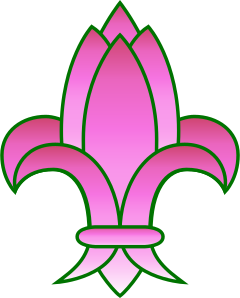Fédération indochinoise des associations du scoutisme
Cette page est en travaux. Il est donc propable qu’elle comporte des incohérences ou des oublis, vous pouvez consulter la page de discussion pour en savoir plus. |
| Fondation : | 1930 |
|---|---|
| Disparition : | 1954 |
| Fondateurs : | |
| Président : | |
| : | |
| Commissaire général scout: | {{{commissairescout}}} |
| Commissaire générale guide: | {{{commissaireguide}}} |
| Siège : | |
| Site web : | |
| E-mail : | {{{mail}}} |
| Effectifs : | {{{effectif total}}} membres. |
| Effectifs : | jeunes. responsables. |
La Fédération Indochinoise des Associations du Scoutisme réunissait les associations scoutes du Cambodge, Laos et des provinces de l'actuel Vietnam.
Histoire
La Fédération Indochinoise des Associations du Scoutisme (FIAS) fut, de 1930 à 1954, l'association faîtière à caractère neutre du point de vue politique ou spirituel réunissant les divers mouvements scouts de l'Indochine alors française. Après son éclatement, ses successeurs furent les associations vietnamienne, cambodgienne et laotienne.
Vers 1930, le scoutisme apparait dans des collèges et écoles à Hanoï et Saïgon. André Lefèvre, alors commissaire général des Éclaireurs de France, tient à Dalat un camp-école pour 60 chefs venus de toutes l'Indochine française. Il parait appuyé par l'administration coloniale qui désire canaliser la jeunesse éduquée. En 1937, André Schlemmer permet d'officialiser la FIAS.
1930s membership card from the Annamese branch of the Fédération Indochinoise des Associations du Scoutisme Durant la période 1939-1945, la Franc perd de l'influence puis le scoutisme est interdit par les Japonais. En 1946 Le scoutisme est unifié pour les trois pays mais c'est un échec.
In 1946, the National Scoutmaster Conference unified the Scouting movements in the three regions of Vietnam, and the General Committee was established. The First Indochina War erupted at the end of 1946, and the Scouting movement in Vietnam was on hiatus until 1950.
During the war, many members of the Scouting movement were separated into different sides. While all members of the General Committee established in 1946 followed Hoàng Ðạo Thúy into hiding, some Scoutmasters and Scout members in the cities began to restore the movement from 1950, especially in Hanoi.
After the Geneva World Scout Conference in 1954, Scouting returned to Indochina. The Scout Association of North Vietnam was abolished as North Vietnam was under communist rule, and as a result, the Scouts lost their former training ground, but soon established a new one near Đà Lạt.
The symbolism in the emblem of Fédération Indochinoise des Associations du Scoutisme incorporates the red lotus, and can be seen in the modern emblems of the Scouts Lao and the Hội Hướng Đạo Việt Nam.
Publications
- L'Appel Scout, (The Scout Call) bulletin of the Canon Cornette troop, Saïgon, 1938-1939(?)
- Bulletin de liaison des aumôniers et des chefs catholiques de la Fédération indochinoise des associations de Scoutisme, (Newsletter for chaplains and Catholic leaders of FIAS), monthly publication aligned with the spiritual view of the Scouts de France, Hanoï, 1942
- Chef, (Chief), official organ of the leaders of FIAS, 500 copies printed monthly 1937-1939 (?). Published in Hanoi and Saigon
- Hướng Đạo (Les Scouts, The Scouts), official organ of the leadership of Scouts de Cochinchine (Scouts of Cochin China), Hanoï, 1935-1940. Preceded by Hướng Đạo Thang Tien (Les Scouts en avant, Forward Scouts) and absorbs Thang Tien (En avant, Forward, 1935–1936) in 1937
- Montjoie, organ of the Scouts de France d'Hanoï (Scouts de France of Hanoi), the Catholic Scout body of FIAS, Hanoï, 1932-1940
- Rayonner (Getting Around), organ of the Scouts-routiers de Cochinchine (Rover Scouts of Cochin China), 1936-1940 (?), 150 copies in 1939, published in Saigon
- Servir (To Serve), monthly publication of the Association cambodgienne de Scoutisme (Cambodian Association of Scouting), Phnom Penh, 1944
Voir aussi
 Fédération Indochinoise des Associations du Scoutisme sur Wikipedia (Source originale de l'article)
Fédération Indochinoise des Associations du Scoutisme sur Wikipedia (Source originale de l'article)


